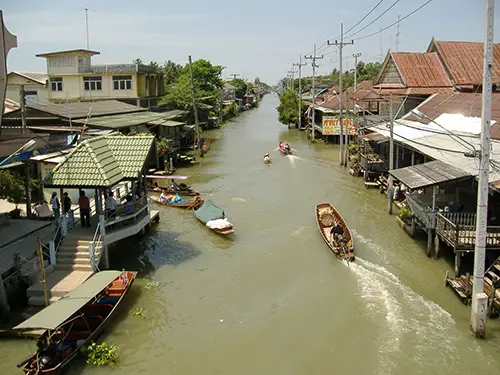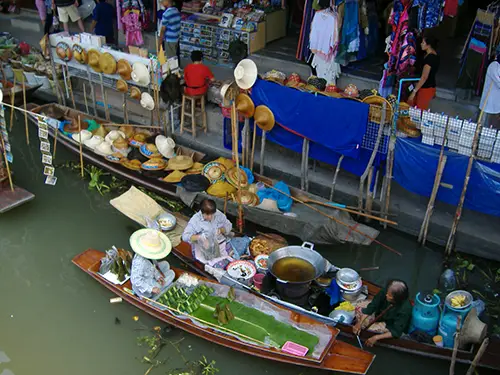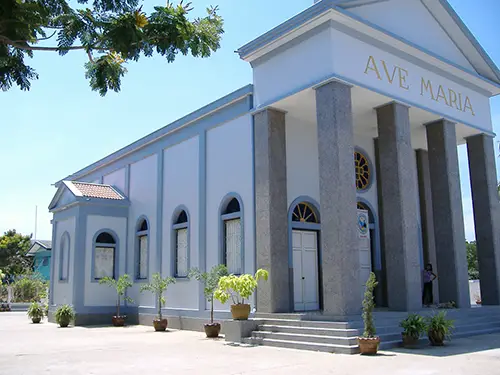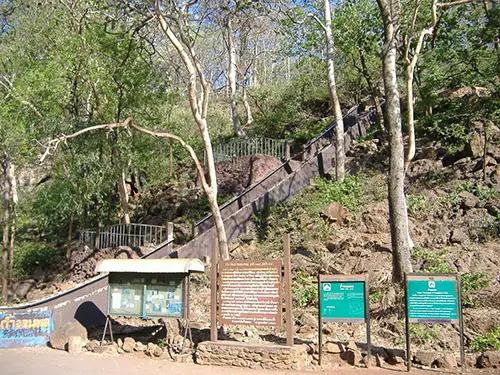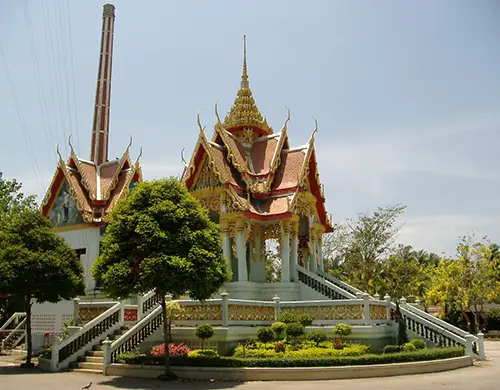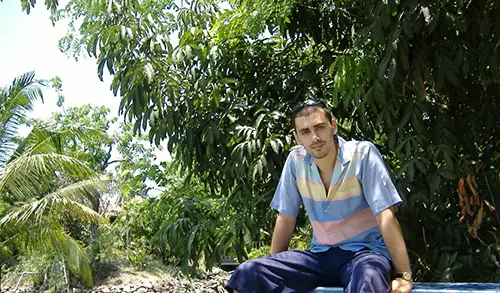Many aspects of Thai culture have been highly influenced by the Indian civilization, especially when it comes to names as the Thai language has borrowed heavily from Sanskrit. Many province in Thailand, especially in the central part, end with the word “buri” which is a word derived from the Sanskrit “puri” meaning “city” or “town”. But, some provinces even trace the etymology of their names completely to Sanskrit.
Such is the case of Ratchaburi, a province located about 100 kilometers southwest of Bangkok, whose name can be translated as “royal city” with the word “racha” (from the Sanskrit word “raja”) standing for “royal” or “kingly.” Apart from being a great example of language assimilation, the province of Ratchaburi is also a great place to visit and explore. If you’re thinking of going on a day trip to Ratchaburi, here are five destinations you should try not to miss. They include caves, temples, floating markets, and even churches!
Ratchaburi is not named the “royal city” for no reason. According to some sources, King Rama I was born here (with other scholars quoting Ayutthaya as the place of birth and Ratchaburi as one of his governorships before he assumed the role of the king). This is also reflected in the province’s seal which is made up of a royal sword above royal sandals placed on an aristocratic tray.
The most famous, crowded, and overly publicized destination in Ratchaburi province is Damnoen Saduak Floating Market, a favourite with travel agencies, postcard printers, and even travel guide covers. The fame of this floating market has somewhat diminished in recent years as many other floating markets had opened closer to Bangkok, but the exoticism of the place is still there.
If you want to experience the real purpose of the market, then you’d better get there early in the morning so that you can witness the local community engaging in trading activities straight from their boats. By 11 a.m., the floating market winds down but there’s still plenty of touristy things to do, such as renting a boat for a ride up and down the canal or going souvenir shopping in one of the many stalls that stay open even after the locals have finished their morning trade. The colors of the merchandise in the boats make the place a hotspot for photographers.
Although not as imposing as the Nativity of Our Lady Cathedral in the neighbouring province of Samut Songkhram, Ave Maria is still a church worth visiting even if only for the peace and quiet of its courtyard. Compared to the hustle and bustle of the floating market, this Catholic church belonging to the Diocese of Ratchaburi is a nice place to enjoy a few minutes of silence.
The church is in excellent condition and is flanked on one side by a row of eucalyptus trees where one can rest in the shade. Unfortunately, unless you make the effort to arrive there for mass, the church doors will be closed and you’re left only with the great marble columns and the tall steeple to admire on the outside.
If to the east Ratchaburi province is crisscrossed by tributaries of the Mae Klong River and its canals, to the west, on the border with Myanmar, you’ll find limestone mountains. When you put the two together, you get caves with stalactites and we recommend you stop by at two of them.
The most visited cave in Ratchaburi is Khao Bin Cave but since it’s more fun to travel on the unbeaten path, also plan to visit Chompol Cave found on the premises of Wat Chompol. The cave is made up of several chambers containing religious symbols and statuettes plus the hard-to-see bats hanging from the ceiling (which give the cave a strong smell). At the entrance of the cave you will be greeted by families of macaque monkeys which are on the lookout for any loose accessories that you might have.
There’s nothing special about the temple cave so, if you want to explore more unique religious architecture, then, your last stop for the day should be at Wat Prasart Sit. This Buddhist monastery (now totally reconstructed) was built by Chuang Bunnag, King Rama VI’s regent, and was part of a 19th century modernization process that also saw the digging of the Damnoen Saduak canal.
The centerpiece of the temple is a raised shrine with a three-tier roof topped by a Siamese royal umbrella. The temple offers both Thai and Chinese style worship elements, making it a great place to explore under Ratchaburi’s clear, sunny sky.
Ratchaburi is a laidback province that makes a great one-day trip destination. With its local culture strongly connected to that of its natural elements, Ratchaburi has to offer something that most people living and working in Bangkok wouldn’t mind escaping to once in a while: a quiet place to sit down and watch the world go by.
Ratchaburi province is easily accessible from Bangkok by bus, train, or van. Buses leave for Ratchaburi from the Southern Bus Terminal on a daily basis, while trains leave regularly from both Hua Lamphong and Thon Buri Railway Station (Bangkok Noi). Alternatively, you can catch a van from Victory Monument or drive your own car out of the capital on Phetchakasem Road or Highway 4. The trip takes about 2 hours.
